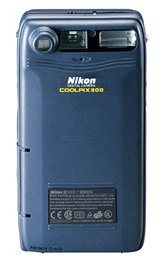Larry Rivers: Fashion and The Birds
Marlborough Gallery, New York
October 29 - November 29, 1997
Marlborough Gallery presents an exciting exhibition of new work by the inimitable American painter, Larry Rivers. This is Larry Rivers' twelfth one-man show at Marlborough since his joining the gallery in 1964. Larry Rivers was born Yitzroch Loiza Grossberg, in the Bronx, New York in 1923 to Russian Jewish immigrants. He began his career in music as a jazz saxophonist. In 1947, at the suggestion of a friend, he began to paint at Hans Hoffman's school in Provincetown, Mass. His success was such that two years later he was given his first New York show. In 1950, Clement Greenberg and Meyer Schapiro selected him to be part of a New Talent show, and since that time he has become one of America's most important and innovative painters.
Larry Rivers' exhibition is comprised of approximately twenty-five paintings and ten drawings. Larry Rivers likes to work in a series using a central subject such as in his previous show called Art and the Artist. In this show, many of the works are based on a series derived from his recent interest in James Audubon and The Birds of America. (His first painting based on this subject was painted in 1985/86, entitled Twenty-five Birds of the Northeast, taken from a place mat at his table at his favorite diner). Among the new works are two brilliant portraits of Audubon as well as several works devoted to single bird studies such as a striking Great Blue Heron (50 x 48 inches), Black Neck Stilt (30 x 34 inches) and Comorant (48 x 40 inches). In other works, Larry Rivers has taken female models from the world of fashion and mixed them with bird images creating an intriguing visual Gestalt from separate elements of experience and emotion. This eclectic mixture is at once provocative, surprising, and enjoyably fresh. The medium for these works is based in some cases on the relief technique which Larry Rivers has developed into his own personal style. In some of these, he has deepened their relief increasing thereby the work's tactile exuberance. In other works, Larry Rivers has continued to use the flat canvas to magnificent expressive effect.
What stands out in all Larry Rivers' work is the superiority of his draughtsmanship, the lightness of his touch, the presence of his hand, and a unique color palette. It has been said that "Rivers' stubborn individualism has become his signature." He has been called a "maverick and innovative artist," "enterprising and mercurial," "a reactionary." Art International called him "contrariness incarnate." Rivers himself has said, "I have my own agenda," reflecting Arthur Jones' statement that "Rivers has constantly challenged the status quo." Rivers was painting figurative works when the tide was high on Abstract Expressionism. He was the first American artist to use commercial images in fine art which led the London Sunday Telegraph later to call him "the grand old man of Pop Art." In the same article, the Telegraph said Larry Rivers "has always stayed true to his talent as a figurative draughtsman and interested in relating the contemporary image to the tradition of western painting." In his brilliant new work, Rivers once again adds to the lexicon of stimulating contemporary images that one hasn't seen before. Rivers' style has always been hard to pin down. John Ashberry, who described Rivers' work as "handsome and dazzling original," summarized that "Rivers has always been out of sync" and Roberta Smith of the New York Times called him "a consummate synthesizer who seems to have considered any artist or art work fair game." But perhaps the wellspring for the strength, sensitivity and enormous individuality by which his work can be measured has been best sounded by John Gruen who wrote the following:
"Early on, Rivers had developed a painting style he could call his own. It might be categorized as being semi-abstract, semi-realistic, pop-artist, post-romantic, or neo-classic. But whatever the label, it reflected (and still does) an untrammeled imagination, an extraordinary draughtsmanship, a color sense that has no truck with garishness or vulgarity, and an innate vitality that springs from Rivers' own restlessness and reflects itself with charged-up spontaneity, into whatever he paints."
Larry Rivers is represented in numerous public collections in the United States. Among them are the following: The Baltimore Museum of Art; The Art Institute of Chicago; Dallas Museum of Art; De Menil Foundation, Houston; The Nelson-Atkins Museum of Art, Kansas City; Los Angeles County Museum of Art; The Minneapolis Institute of Art. In New York City, he is represented in the Solomon R. Guggenheim Museum, The Jewish Museum, the Metropolitan Museum of Art, the Museum of Modern Art and the Whitney Museum of American Art. In Washington, D.C., he is represented at the Corcoran Gallery of Art, the Hirshhorn Museum & Sculpture Garden and the National Gallery of Art. He is also represented by the Tate Gallery, London, the Museo Rufino Tamayo, Mexico City and the Museo de Arte Contemporaneo, Caracas.
An illustrated color catalogue of the Rivers Fashion and The Birds is available.
This exhibition is accompanied in the small gallery by a show of small sculptures by Arnaldo Pomodoro.
Following Larry Rivers' exhibition in December will be an exhibition of paintings by Vincent Desiderio.
MARLBOROUGH GALLERY
40 West 57th Street, New York, NY 10019
www.marlboroughgallery.com



